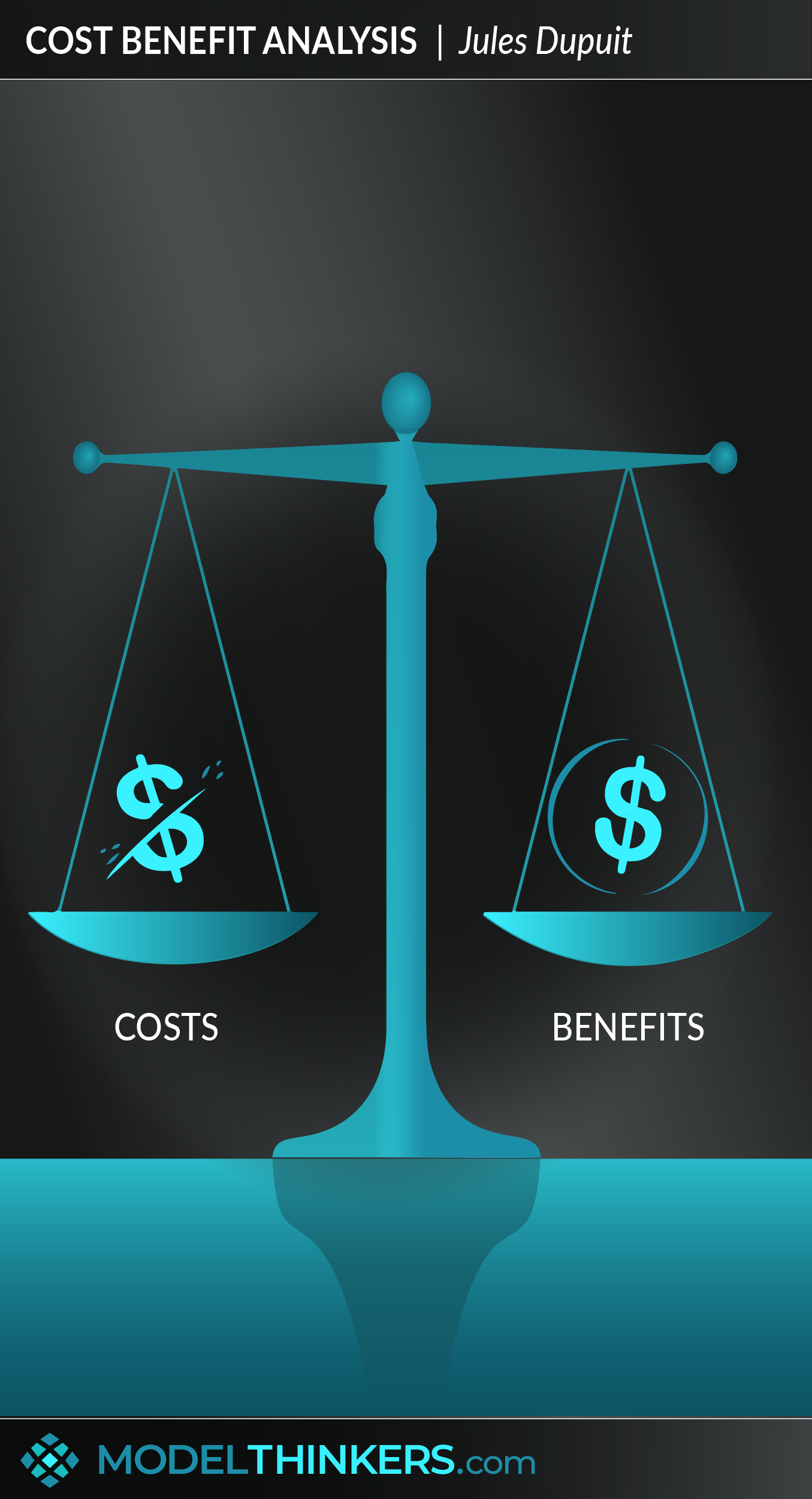

 0 saved
0 saved
 22.9K views
22.9K views








How do you balance and compare competing options?
A Cost-Benefit Analysis or CBA assesses the merits of a decision by performing a comparative analysis of its estimated costs versus expected benefits.
APPLICATION.
This is often executed as a list of costs and benefits that assigns all factors, including intangible ones, with a dollar figure.
At its simplest, CBAs can be used as a simple analysis tool of costs divided by benefits but can be based on more complex formulas that consider opportunity costs, time and discounting.
For example, discounting accounts for the fact that the more distant the future benefit or cost is, the lower its value. With this approach, a CBA would assess the total discounted benefits of a project over its life span and divide that by the discounted costs of the project.




- Brainstorm your costs and benefit lists.
The process of generating cost and benefits lists is a useful step to gain perspective and consider a range of issues relating to the decision.
- Consider direct, indirect, intangibles and opportunity cost.
As well as the obvious monetary costs and benefits, consider indirect costs such as fixed expenses, intangible costs such as morale, and opportunity costs, based on the lost choice in a decision. Similar considerations can be applied to the benefits side of the equation.
- Reference similar experiences to help to price.
Analyse past decisions and projects to generate all relevant factors and assign monetary values to them. Basing off existing reference points is more reliable than generating it from your impressions alone.
- Consider assumptions.
When assigning a monetary value to the costs and benefits, brainstorm the assumptions you are making and make a judgement on how confident you are in those assumptions. This provides more insight into the ultimate reliability of your analysis.
It can be difficult to identify all relevant factors and price them accurately and it’s almost impossible to do so without bias. Intangible costs, such as morale, attitudes or culture, are particularly challenging to simply price and are often not considered effectively.
US regulatory policy.
US Administration has used CBA for decades and it was brought to the fore under President Reagan’s administration which mandated it in the regulatory process. Part of his administration’s deregulation agenda required federal agencies to produce regulatory impact analyses where the estimated impact exceeded $100 million. This led to debate about whether CBAs were too time-consuming and prone to being used politically.
Poisoned water.
In his book, Cost-Benefit Revolution, Cass Sunstein provides the example of removing toxins from a water supply. He does the maths, saying that if individuals are willing to pay $90 to remove a 1 in hundred thousand chance of death from water poisoning, it is consistent with valuing human life at $9 million. Obviously the pricing of human life alone is an example of the challenges faced by such analysis.
Cost-benefit analysis is traditionally part of an accounting and finance suite of tools though can be applied more broadly in decision making.
Use the following examples of connected and complementary models to weave the cost-benefit analysis into your broader latticework of mental models. Alternatively, discover your own connections by exploring the category list above.
Connected models:
- Impact effort matrix: another way to assign value and prioritise.
Complementary models:
- Sunk cost fallacy: letting go of past investments.
- Second order thinking: to consider the issues beyond the immediate cost benefit analysis.
The origins of this model are unclear. Cass Sustien argues the case for CBAs at a governmental level in his book The Cost-Benefit Revolution here.
 My Notes
My Notes
Oops, That’s Members’ Only!
Fortunately, it only costs US$5/month to Join ModelThinkers and access everything so that you can rapidly discover, learn, and apply the world’s most powerful ideas.
ModelThinkers membership at a glance:






“Yeah, we hate pop ups too. But we wanted to let you know that, with ModelThinkers, we’re making it easier for you to adapt, innovate and create value. We hope you’ll join us and the growing community of ModelThinkers today.”




































































































































